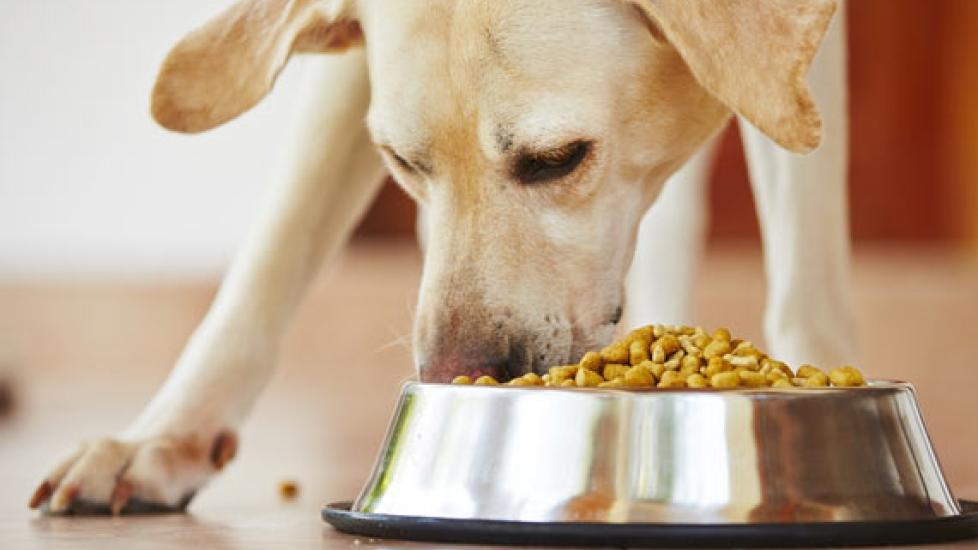How to Get Dogs to Eat Slower
Most dogs love to eat, but problems can arise when dogs wolf down (no pun intended) their food. Fast eaters tend to swallow more air than do slow eaters, which is a risk factor for a potentially fatal condition called gastric dilatation and volvulus (GDV), especially in large and giant breeds of dogs. Research in people has also pointed to a link between fast eating and obesity and type 2 diabetes.
Determining why a dog is eating so fast is the first step in solving the problem.
- Is your dog ravenously hungry? If you are only offering one meal a day, try feeding your dog 2-4 smaller meals spaced throughout the day.
- Are your feeding an exceptionally calorie/nutrient dense food, which limits the volume your dog can eat? Some dogs will slow down when their meals consist of a greater amount of a lower calorie/higher fiber diet.
- Does your dog feel like it is in competition with other housemates for food? Try feeding your pets in separate rooms.
If none of these simple fixes do the trick, consider making an appointment with your veterinarian. A physical exam and some simple lab work (fecal examination, blood tests, urinalysis, and perhaps some abdominal imaging) will rule out most of the diseases that can make dogs perpetually hungry.
Once you are convinced that your dog’s fast eating is simply a behavioral quirk, it’s time to change how you manage your dog’s meals. The simplest method of getting your dog to eat more slowly is to scatter his kibble on the kitchen floor, patio, or even in the grass of your yard. Your dog will scamper about picking up and eating a few pieces at a time.
If you are worried about the aesthetics (slobber all over the place) or potential health risks (toxic pesticides or cleaning solutions) of making your dog eat off the ground, buy one of the many slow-feeder bowls that are now available. Some just have a few pillars sticking out of the bottom that a dog has to work around, while others are essentially mazes that make dogs use their tongues to pick out only a few kibbles at a time. Or, you can try making your own slow feeder by placing a few large, clean rocks (too large to swallow) or a brick in your dog’s regular food bowl.
Some dogs still continue to eat fast even when faced with a slow-feeder bowl (I’ve known a few who figured out they could just tip them over). Food-dispensing toys are another option. Some are like puzzles, making dogs rotate a slotted top or slide doors around to reveal small portions of food. Others roll or wobble, and when they are in the right position a few kibbles will fall out. Others simply make it hard for dogs to reach their meal without a lot of chewing or licking (e.g., a hollow rubber toy stuffed with canned food and frozen).
Whichever method you pick, make sure your dog is still able to eat the amount of food necessary to maintain his body weight. You don’t want to frustrate him to the point where he stops eating, just slow him down a bit to keep him safe.

Dr. Jennifer Coates
Image: Jaromir Chalabala / Shutterstock
